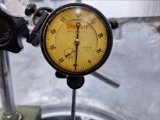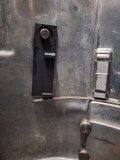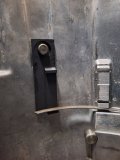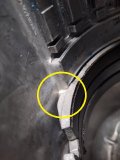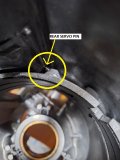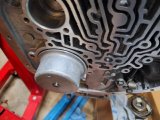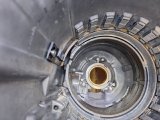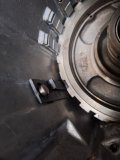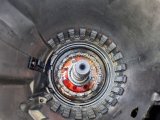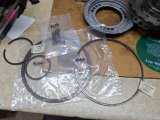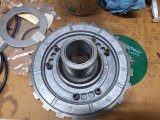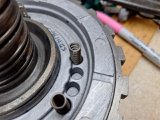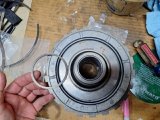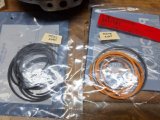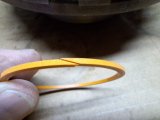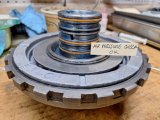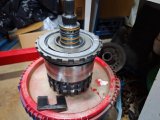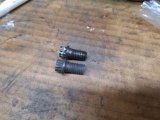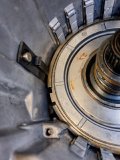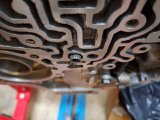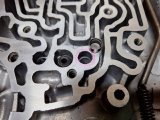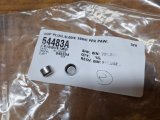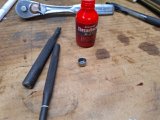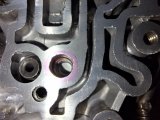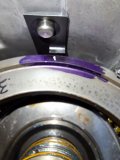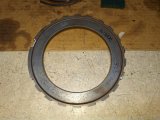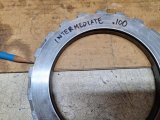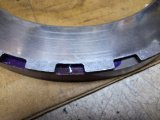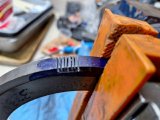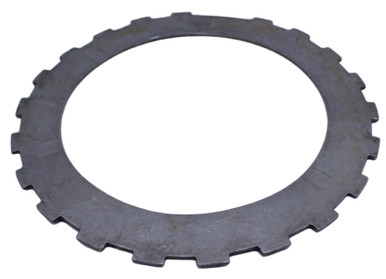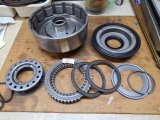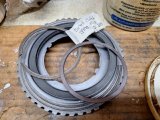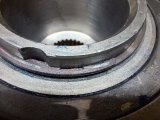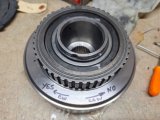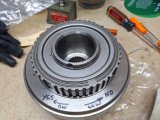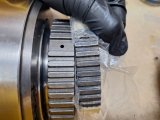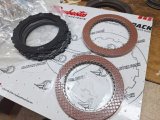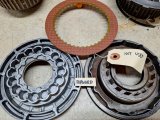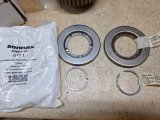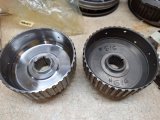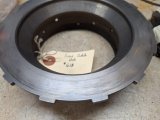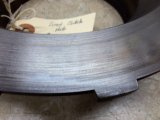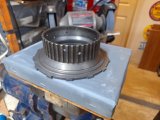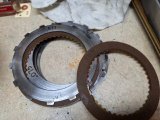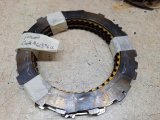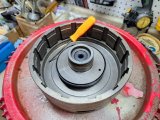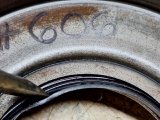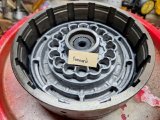Intermediate Clutch ....
Now we get into figuring out what combination of clutches and steels will provide spec clearance.
The original setup used smooth clutches.

The kit that I wanted and ordered has the waffle clutches, which I will use whenever possible.
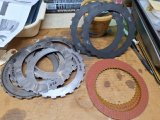
I also went with a spiral snap ring vs stock snap ring on the intermediate clutch pack. The stock snap ring is almost always replaced by a more robust snap ring, and they can be bought in different thicknesses. You can see the difference on the spiral vs stock snap rings.
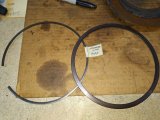
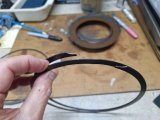
I installed the wave plate and waffle clutches and two new steels. I used one of the original steels too, a bit thinner.
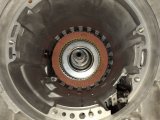
However, when I placed the pressure plate on top of the clutch pack, there wasn't enough space in the lug notches for the snap ring.
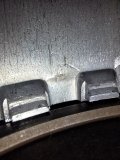
So, time to start figuring and adjusting. The intermediate has the largest diameter clutches/steels - I don't have any extras of different thicknesses, so I'll have to order some parts. I'll verify the preferred sweet spot, but the overall clutch clearance needs to be in the .050 range I believe.
Here's some numbers, taking into account there's some wear on the original parts. This is just to get an idea of starting point and where we are heading. I didn't take a clearance measurement of the original clutch pack and I hope Rick checks my math
 Snap Ring Thicknesses (not installed yet)
Snap Ring Thicknesses (not installed yet)
Stock original = .093
New spiral type = .086
Original Clutch Pack Thicknesses
Original smooth clutch = (3) average of .078
Original steel = (2) .100
Original steel = (1) .070
Original wave = (1) .067, just material thickess, not including the wave height
Original Pressure Plate = (1) .323
Total Thickness = .894
New Clutch Pack Thicknesses (first pass)
New waffle clutch = (3) average of .092
New steel = (2) .098
Original steel = (1) .070
Original wave = (1) .067, just material thickess, not including the wave height
Original Pressure Plate = (1) .323
Total Thickness = .932
I've got an immediate thickness increase of .038, and I can't fit the snap ring into the case lug grooves. Meaning that there is zero clearance in the clutch pack, and I've got to reduce the thickness by at least that .038 amount to see what ballpark the overall clearance may be in. So now I need to do some research on clutches/steels and decide what to get. I don't want to use Alto smooth clutches as they are very thin - if I do need smooth clutches, I'll use Raybestos or Borg Warner.
Edit - it seems that most th400 have .080 smooth frictions in the intermediate. I'm not sure why this kit has .092 frictions, but I went ahead and ordered three .080 waffle type Raybestos frictions. I want to keep the steels as thick as possible, and the wave plate will be re-installed for shift cushioning. And I'll use the thinner spiral snap ring. So I should be able to look at combinations of frictions and steels to get to desired pack clearance.
In the meantime I can mess with the 4L80e direct drum clutch setup, install the piston, etc.


 posting info!
posting info!